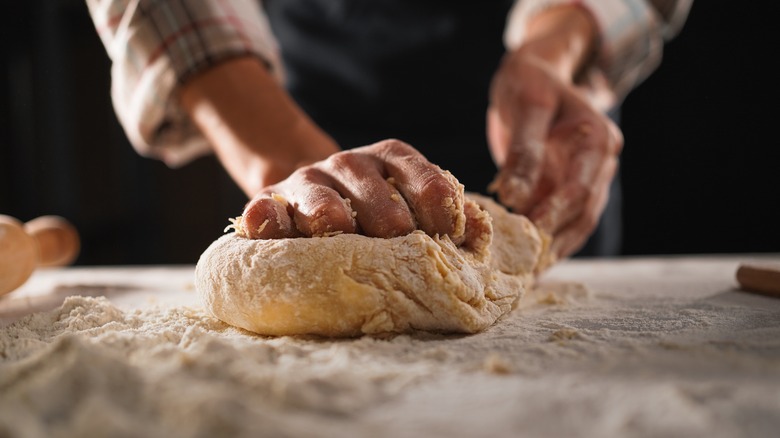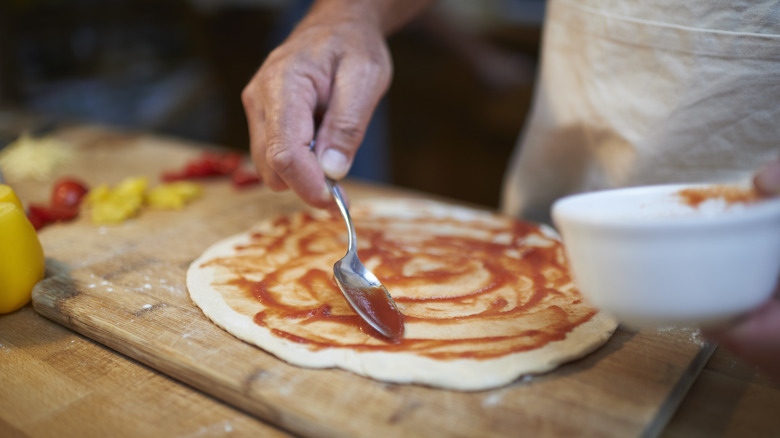The Mistake You're Probably Making When Rolling Out Store-Bought Pizza Dough
Who doesn't look forward to pizza night at home? However, rolling out store-bought dough is sometimes a feat in itself. To help roll out the dough and create the best base for your pizza, Food Republic reached out to Luca Corazzina, chef de cuisine at OLIO E PIÙ, for advice. His tip: avoid rolling the dough out while it's cold. "Rolling out store-bought pizza dough while it's still cold is a common mistake that can lead to frustration in the kitchen," Corazzina shared. Even if you are using your own homemade pizza dough, rolling the ingredient straight out of the fridge is problematic for several reasons.
Corazinna explained, "When the dough is cold, it remains tight and resistant to stretching due to the gluten strands being firm and contracted." Gluten strands that have become too tough can result in your dough tearing, bunching up while spreading, and even developing a dense and chewy texture after it is baked. To avoid this, the expert suggests letting the dough come to room temperature before working with it to make things easier. More specifically, Corazinna recommended, "[Let] the dough rest ... for at least two hours [allowing] the gluten to relax, making it significantly easier to stretch and shape without excessive force." Your pizza dough will become softer and lighter as it warms, leaving you with a deliciously textured pizza crust that's much easier to work with.
How to properly handle frozen pizza dough
If you're starting with dough you stored in the freezer, don't worry — Luca Corazinna filled Food Republic in on some tips and tricks to easily transition your dough from fully frozen to perfectly pliable. The expert shared, "...The best approach is to transfer [frozen dough] to the refrigerator and let it thaw overnight. This slow thawing process ensures that the yeast remains active without shocking the dough with rapid temperature changes, which could affect its rise and texture." Then, let it come to room temperature like the previous instructions. It may take some extra time and forethought to prep, but properly moldable dough is worth it.
For optimal conditions while rising, place your dough in a flour-dusted bowl covered in plastic wrap. You can also add the rising dough to a cool oven with just the cook light on for faster proofing. For an even more immediate way to get your dough to reach room temperature, Corazinna advised, "[You] can briefly preheat the oven to 300°F for a minute or two, turn it off, and then place the dough inside to rest in the residual warmth. This gentle heat encourages a better rise and makes the dough much more pliable when it's time to roll it out." In no time, you'll have a yummy base ready for piling on tons of toppings (think sweet and savory like this cheesy fig and arugula pizza), or create a vibrant pie with pizza sauces that shamelessly break flavor traditions.


